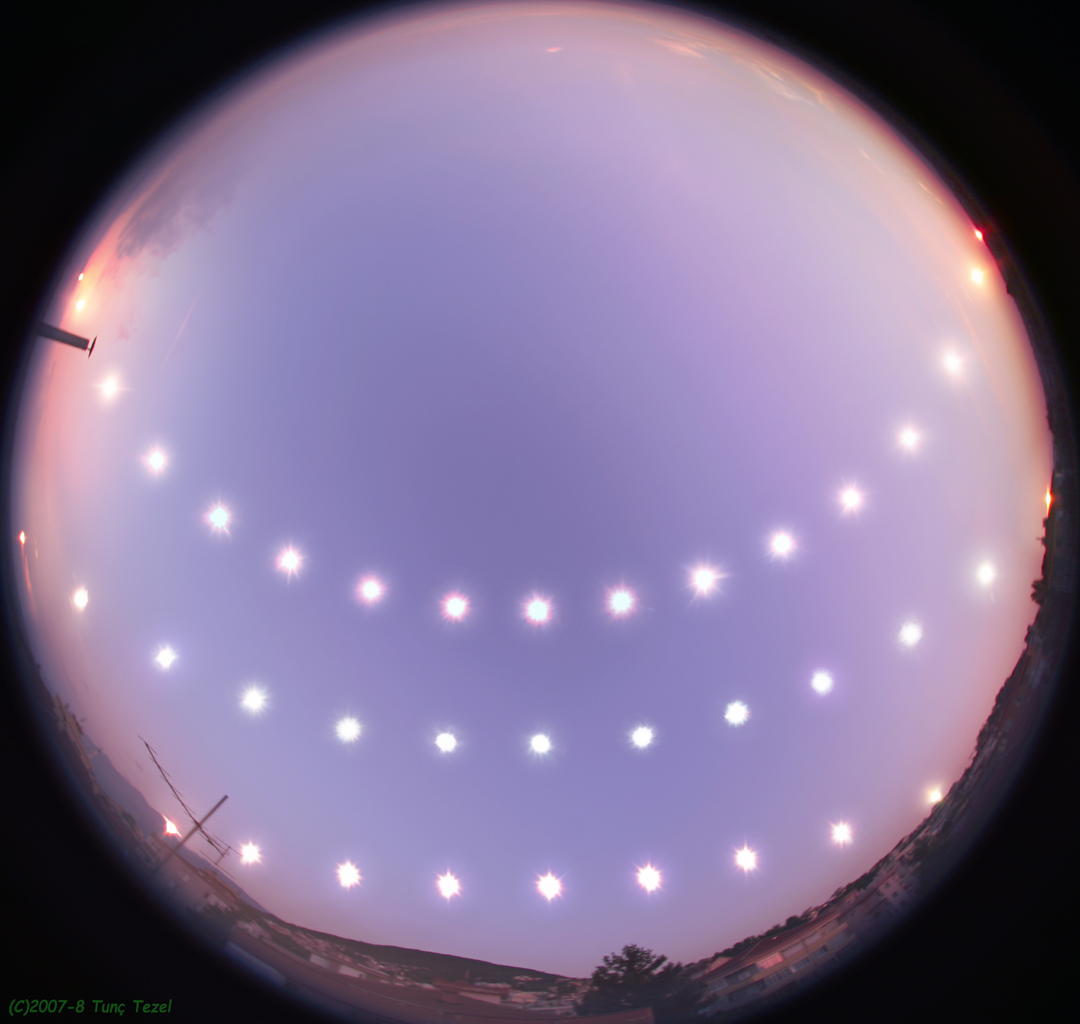秋分:从冬至到夏至的太阳
2019 September 23
Equinox: The Sun from Solstice to Solstice
Image Credit & Copyright: Tunç Tezel (TWAN)
Explanation: Today is an equinox, a date when day and night are equal. Tomorrow, and every day until the next equinox, the night will be longer than the day in Earth’s northern hemisphere, and the day will be longer than the night in Earth’s southern hemisphere. An equinox occurs midway between the two solstices, when the days and nights are the least equal. The featured picture is a composite of hourly images taken of the Sun above Bursa, Turkey on key days from solstice to equinox to solstice. The bottom Sun band was taken during the north’s winter solstice in 2007 December, when the Sun could not rise very high in the sky nor stay above the horizon very long. This lack of Sun caused winter. The top Sun band was taken during the northern summer solstice in 2008 June, when the Sun rose highest in the sky and stayed above the horizon for more than 12 hours. This abundance of Sun caused summer. The middle band was taken during an equinox in 2008 March, but it is the same sun band that Earthlings see today, the day of the most recent equinox.
秋分:从冬至到夏至的太阳
影像提供与版权: Tunç Tezel (TWAN)
说明: 今天是秋分,昼夜等长的一天。从明天开始到下个春分的每一天,北半球的黑夜会比白天长,相反的,南半球则是白天长于黑夜。而分点(春分和秋分),则出现在白昼和黑夜长度差异最大的夏至与冬至之中点。上面这幅摄于土耳其的Bursa市,由每小时曝光一次的照片组合成之主题影像,呈现了冬至、春分到夏至的这三个关键日子的日轨。最低的那道摄于2007年的冬至,日轨低悬,太阳在地平面之上的时间最短,因缺乏日照而造成冬天。最高的那道日轨摄于2008年6月的夏至,在一年之中,太阳在天空的位置最高,悬在地平面之上的时间超过12小时,因日照充足而造成夏天。中间的那道日轨摄于2008年3月的春分,不过,地球住民在今天的秋分所见之日轨与此相同。

